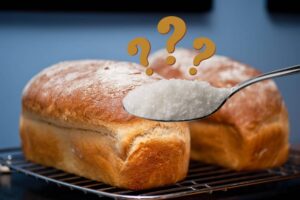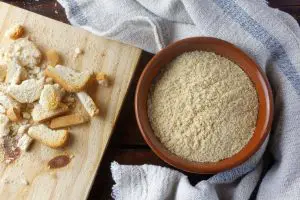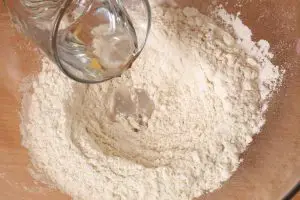Why Does My Sourdough Bread Split When Baking?
Most people can agree that sourdough bread is one of the most fickle breads to work with.Not only does sourdough bread require a specific kind of starter that can take a considerable amount of time to cultivate and nurture, but it can be hard to work with when it comes to the actual baking process. It may not rise the way it should, or it may not taste right. One of the most common problem is sourdough bread splitting when baking. This can not only affect the appearance of the loaf, but depending on why it is splitting, it may affect the taste as well.
No products found.
To determine what you can do about your sourdough bread, you will want to try and do some sourdough bread troubleshooting to see why the bread is splitting. From there, you can begin working with options to try and alleviate the problem so that the next time you make sourdough bread, you won’t have to face the same issue of the loaf splitting apart.
What Causes Splitting in Sourdough Bread?
Having the sourdough split during the baking process is unfortunately the result of many different issues, so it can be difficult to pin down exactly what is going on with your bread. If this is your first time making the bread, then there’s going to be a good chance that there will be more than one mistake contributing to the splitting bread, and learning how to identify these mistakes is going to be key in your ability to improve on the bread.
There are many reasons why sourdough bread can split, such as the dough itself is either too wet or too dry, the shape of the loaf is wrong and causes tension, a tight seam in the bread, under-proofing the bread, and problems with crust, steam, and slashing. As you can tell, there are a number of issues that can lead to this problem, which is why it is one of the most common problems to arise from sourdough bread. Thankfully, a fair few of these problems are easily identifiable if you know what you are looking for.
Problems with the Dough Itself
Naturally, when your dough is not optimal, the end result of the bread is not going to be optimal either. If the dough is too dry, it will end up crusting before it has fully risen. This means that as it continues to rise, the newly formed crust will not be able to keep up, causing it to split open as it grows. Likewise, when there is too much moisture in the dough, there will be extra steam inside of the tiny air pockets that give bread its characteristically light texture, which will lead to the steam expanding in the heat of the oven, causing cracks and bursts within the dough by the time the crust forms. This will also cause problems when you slash the bread to relieve the pressure that builds up naturally during the baking process.
To remedy this, you will need to teach yourself what the right moisture level of sourdough should be before you put it into the oven so that you can either moisten it or dry it out before you begin baking and the mistake becomes irreversible. This is a process that takes time to learn, rather than being able to fix it immediately.
Problems with the Skin of the Dough
When working with the dough, you always want to make sure that you are shaping it properly. This includes removing the largest air pockets and making sure that the skin tension is adequate before baking. If you leave air pockets in, then steam can collect in them, causing them to expand and burst, which nobody wants. If there is too much skin tension, then it will not be able to keep up when the bread naturally rises, leading to the same bursting and splitting. The good news is that you can generally feel for these two problems during the shaping process, which means that when you know what to look for, you will be able to remedy the problem. Both of these issues can be fixed by slowing down and trying again with the molding process.
Problems with Proofing
In terms of breadmaking, proofing is the process where you let the dough rise after the shaping before it goes into the oven. This is the stage where it is fermenting and one of the most important stages. Under-proofing refers to not letting the bread rise for long enough and putting it in the oven before it is ready. (Likewise, over-proofing is when you don’t put it in the oven quickly enough and give it too much time to rise.) When the bread is under-proofed, the heat of the oven will accelerate the fermentation that hasn’t fully happened yet, meaning that there will be too much pressure build-up from the rapid expansion of the gases. The gasses will find the quickest way to release, and this often means bursting through the crust, no matter how deep the crust is made. Most reliable recipes on sourdough bread should offer an ideal amount of time for proofing for you to rely on, especially if you are a beginner and are not yet ready to customize your recipes.
If you are worried about knowing if your bread is properly proofed, there is a simple way to check. You will want to take your finger and gently poke the bread. If it bounces back immediately and springs to life, that means that the bread hasn’t finished the proofing process. If it doesn’t bounce back at all, then it has over-proofed. Ideally, your bread should bounce back about halfway compared to how deeply you poked it.






